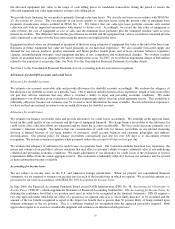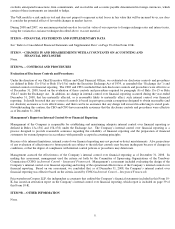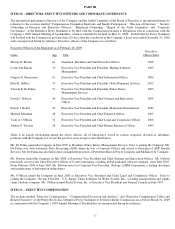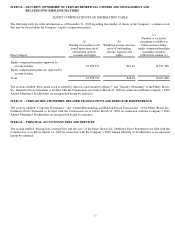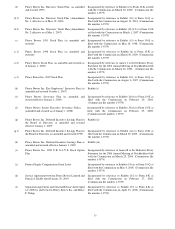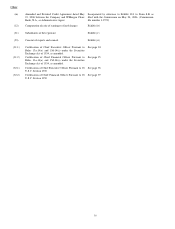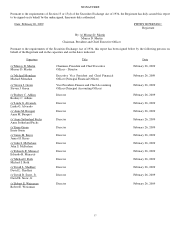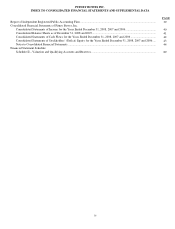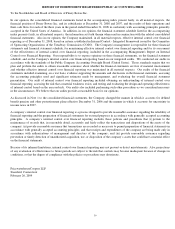Pitney Bowes 2008 Annual Report Download - page 48
Download and view the complete annual report
Please find page 48 of the 2008 Pitney Bowes annual report below. You can navigate through the pages in the report by either clicking on the pages listed below, or by using the keyword search tool below to find specific information within the annual report. 29
statute of limitations for these years has now expired. In 2006, we accrued in discontinued operations an additional tax expense of
$16.2 million to record the impact of the Tax Increase Prevention and Reconciliation Act (“TIPRA”). The TIPRA legislation repealed
the exclusion from federal income taxation of a portion of the income generated from certain leveraged leases of aircraft by foreign
sales corporations. See Note 2 to the Consolidated Financial Statements for further discussion of the discontinued operations.
During 2009, we expect to reverse tax benefits of approximately $11 to $13 million associated with the expiration of vested stock
options and the vesting of restricted stock units previously granted to our employees. This write-off of deferred tax assets will not
increase the amount of tax to be paid.
Effects of Inflation and Foreign Exchange
Inflation, although moderate in recent years, continues to affect worldwide economies and the way companies operate. It increases
labor costs and operating expenses, and raises costs associated with replacement of fixed assets such as rental equipment. Despite
these growing costs and the USPS meter migration initiatives, we have generally been able to maintain profit margins through
productivity and efficiency improvements, continual review of both manufacturing capacity and operating expense levels, and, where
applicable, price increases.
Currency translation increased our 2008 revenue by approximately 0.5%. Also, currency translation gains increased our income
before taxes by $2 million. Based on the current contribution from our international operations, a 1% increase in the value of the U.S.
dollar would result in a decline in revenue of approximately $19 million and a decline in income from continuing operations before
income taxes and minority interest of approximately $2 million.
Although not affecting income, balance sheet related deferred translation losses of $305 million were recorded in 2008 resulting
primarily from the strengthening U.S. dollar as compared to the British pound, Euro and Canadian dollar. During 2007, we recorded
deferred translation gains of $165 million resulting primarily from the stronger British pound, Euro and Canadian dollar, as compared
to the U.S. dollar. During 2006, we recorded deferred translation gains of $83 million resulting primarily from the stronger British
pound, Euro and Canadian dollar, as compared to the U.S. dollar.
The results of our international operations are subject to currency fluctuations. We enter into foreign exchange contracts primarily to
reduce our risk of loss from such fluctuations. Exchange rates can also impact settlement of our intercompany receivables and
payables that result from transfers of finished goods inventories between our affiliates in different countries, and intercompany loans.
See Note 19 to the Consolidated Financial Statements for further details.
At December 31, 2008, we had $250 million of foreign exchange contracts outstanding, all maturing in 2009, to buy or sell various
currencies. As a result of the use of derivative instruments, we are exposed to counterparty risk. To mitigate such risks, we enter into
contracts with only those financial institutions that meet stringent credit requirements as set forth in our derivative policy. We
regularly review our credit exposure balances as well as the creditworthiness of our counterparties. Maximum risk of loss on these
contracts is limited to the amount of the difference between the spot rate at the date of the contract delivery and the contracted rate.
Dividends
It is a general practice of our Board of Directors to pay a cash dividend on common stock each quarter. In setting dividend payments,
our board considers the dividend rate in relation to our recent and projected earnings and our capital investment opportunities and
requirements. We have paid a dividend each year since 1934.







